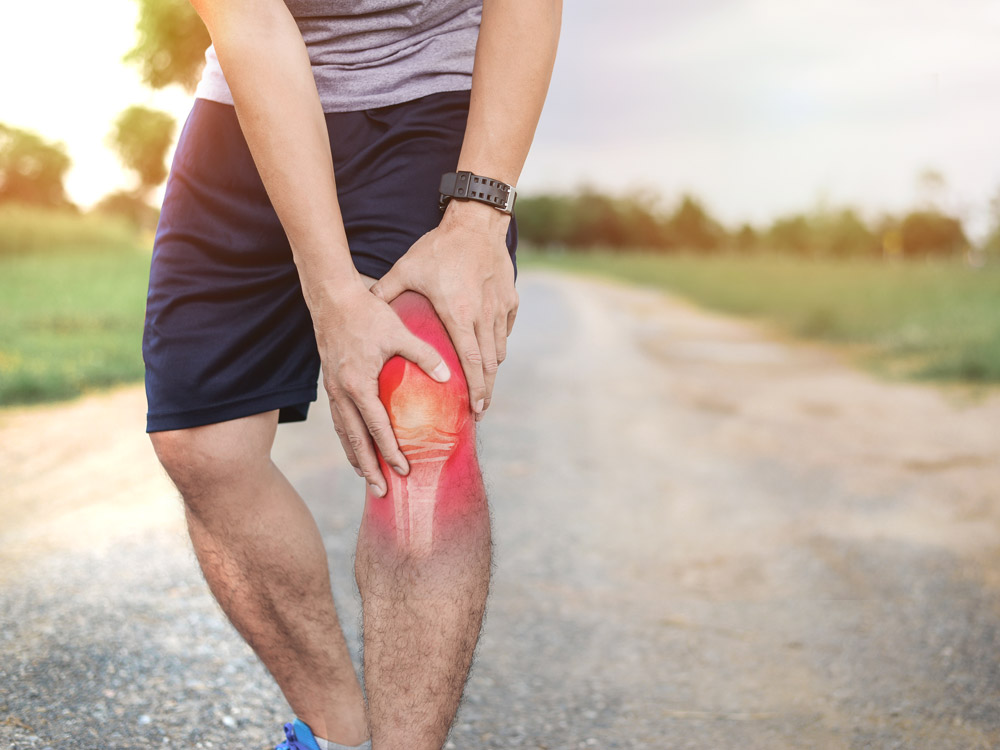At EVER Medical, we specialize in non-surgical orthopaedic care, delivering innovative, less invasive treatments to address musculoskeletal conditions and injuries. Our focus is on alleviating pain, restoring function, and enhancing mobility, empowering patients to reclaim their active lives. From arthritis and chronic pain to sprains and injuries, we provide personalized solutions as the first line of defense—prioritizing recovery without surgery and redefining what’s possible in orthopaedic care.
Joint pain is a common condition that can affect any of the body’s joints, including the knees, hips, shoulders, elbows, and wrists. It can range from mild discomfort to severe pain and can be caused by a variety of factors, including injury, overuse, arthritis, and inflammation. Joint pain is often accompanied by stiffness, swelling, and limited mobility, making daily activities challenging.
Common causes of joint pain and injury include:
• Arthritis: Both osteoarthritis (degeneration of joint cartilage) and rheumatoid arthritis (an autoimmune disease causing joint inflammation) are leading causes of chronic joint pain.
• Injury: Sprains, strains, fractures, and ligament tears (e.g., ACL injury) can lead to acute joint pain and dysfunction.
• Tendinitis: Inflammation of the tendons, often due to repetitive motion, can cause joint pain, particularly in the shoulders, elbows, or knees.
• Bursitis: Inflammation of the small fluid-filled sacs (bursae) around the joints, often resulting from repetitive motion or pressure on a joint.
• Gout: A type of arthritis caused by uric acid buildup, often leading to sudden and severe joint pain.
Treatment Options for Joint Pain and Injury
Depending on the severity and cause of the joint pain or injury, various treatment options are available to manage symptoms, reduce inflammation, and promote healing. Three common options are cortisone injections, hyaluronic acid injections, and platelet-rich plasma (PRP) injections.
Cortisone Injections
Cortisone is a potent anti-inflammatory steroid that is commonly used to treat joint pain caused by inflammation. The injection delivers a concentrated dose of corticosteroid medication directly into the joint or surrounding tissues. This helps reduce swelling, pain, and inflammation in conditions such as arthritis, tendinitis, and bursitis.
Benefits of Cortisone Injections:
• Pain Relief: Cortisone injections can provide significant and immediate relief from pain, particularly in cases of inflammation.
• Reduced Inflammation: The steroid helps suppress the immune response that causes inflammation, which can lead to improved joint mobility and function.
• Quick Recovery: In many cases, the injection can reduce symptoms rapidly, allowing individuals to return to normal activities sooner.
Limitations and Risks:
• Temporary Relief: While cortisone injections provide short-term relief, they do not address the underlying cause of the joint pain. The effects can last from weeks to months.
• Potential Side Effects: Repeated cortisone injections can weaken the tissue around the joint and may lead to cartilage damage or increased risk of tendon rupture if used too frequently.
Hyaluronic Acid Injections
These injections are used primarily for osteoarthritis, helping to lubricate the joint and improve movement.
This therapy is also known as viscosupplementation and is intended to provide relief from pain and improve joint function by supplementing the natural hyaluronic acid found in the synovial fluid of the joint.
How Hyaluronic Acid Injections Work:
1. Lubrication: HA acts as a lubricant, reducing friction between the bones in the joint.
2. Shock Absorption: It improves the joint’s ability to absorb shock, reducing pain during movement.
3. Anti-inflammatory Effects: HA may reduce inflammation and slow the progression of cartilage degradation.
Benefits:
• Reduces pain and stiffness in the joint.
• Improves mobility.
• May delay the need for surgical interventions like joint replacement.
Limitations:
• Effects are temporary, lasting 6 months to a year.
• Works best for mild to moderate arthritis; may be less effective for severe cases.
• Some patients may not respond to the treatment.
Risks and Side Effects:
• Common: Temporary swelling, stiffness, or discomfort at the injection site.
• Rare: Infection, allergic reactions, or joint inflammation.
Who Should Consider HA Injections?
• Patients who have not responded well to other treatments such as pain relievers, physical therapy, or corticosteroid injections.
• Those looking to delay surgery or seeking an alternative treatment for pain relief.
Platelet-Rich Plasma (PRP) Injections
PRP therapy involves drawing a small amount of the patient’s own blood, processing it to concentrate the platelets, and then injecting it directly into the injured or painful joint. Platelets contain growth factors that are essential for tissue repair and healing. The idea behind PRP therapy is to use the body’s natural healing mechanisms to accelerate recovery and reduce inflammation.
Benefits of PRP Injections:
• Promotes Healing: PRP therapy stimulates tissue regeneration by enhancing the body’s natural healing process, especially in soft tissues like tendons and ligaments.
• Reduced Pain and Inflammation: PRP can reduce pain and inflammation, particularly in cases of chronic conditions like osteoarthritis or tendon injuries.
• Long-Lasting Results: Unlike cortisone, PRP injections aim to heal the tissue, providing potentially longer-lasting relief and, in some cases, the possibility of avoiding surgery.
• Minimal Risk of Side Effects: Since PRP uses the patient’s own blood, there is a lower risk of infection or allergic reaction compared to other treatments.
Limitations and Risks:
• Multiple Sessions May Be Required: Some patients may need multiple PRP injections to experience the full benefit, particularly in more severe cases of injury or arthritis.
• Delayed Relief: PRP therapy may take weeks to show noticeable results, as the healing process takes time to unfold.
• Not Suitable for All Conditions: PRP therapy may not be as effective for individuals with advanced joint degeneration or significant structural damage.
Other Treatment Options:
• Physical Therapy: Targeted exercises and stretches can improve joint mobility, strengthen muscles around the joint, and reduce pain.
• Nonsteroidal Anti-Inflammatory Drugs (NSAIDs): Over-the-counter medications like ibuprofen or prescription NSAIDs can help reduce pain and inflammation.
• Surgical Intervention: In cases where conservative treatments are ineffective, surgery may be necessary to repair or replace damaged joints, such as in the case of joint replacement for severe arthritis

